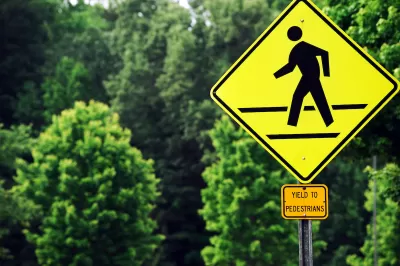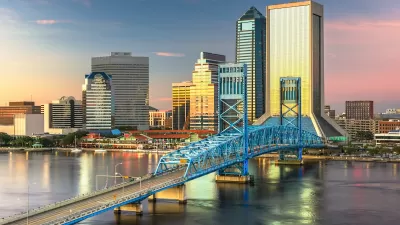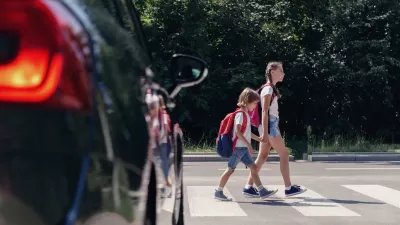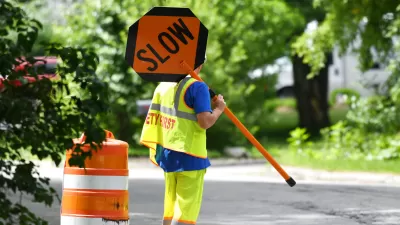Road fatalities fell by a meager 4 percent in the first half of 2023.

According to a press release from the Governors Highway Safety Association (GHSA), pedestrian deaths in the United States dropped by 4 percent in the first half of 2023, but remain 19 percent higher than in 2019 before the pandemic began.
The rise in pedestrian deaths is even more stark when looking back at the past decade – fatalities have risen a staggering 58% between the first half of 2013 and 2023.
The GHSA report attributes the rise in deaths to a steep drop in traffic enforcement, road designs that prioritize fast-moving traffic, and a lack of adequate pedestrian infrastructure in many U.S. cities. “To help address this pedestrian safety crisis, GHSA supports a holistic solution rooted in the Safe System approach that is outlined in the U.S. Department of Transportation’s National Roadway Safety Strategy (NRSS). Each of the five elements of this approach – safe road users, safe vehicles, safe speeds, safe roads and post-crash care – combine to create a multi-layered safety net that can protect people inside and outside of vehicles.”
In a related article in Streetsblog USA, Kea Wilson argues that a Safe Systems approach is necessary but not sufficient to end pedestrian deaths. Wilson writes, “the particular “Safe Systems” that America is building are nowhere near sufficient to meet the scale of our roadway crisis.” Further, “We have not yet meaningfully reckoned with which layers of that system have the most potential to save lives, and which ones are most subject to failure,” nor directed the appropriate resources to strengthening the most effective tools. “And we certainly have not acknowledged that all these endless safety nets just aren’t as necessary when Americans are less dependent on cars to meet their every need, or the essential role that simply having fewer drivers can play in preventing driver violence.”
FULL STORY: U.S. Pedestrian Deaths Fall Slightly in First Half of 2023, but Remain Above Pre-Pandemic Levels

Manufactured Crisis: Losing the Nation’s Largest Source of Unsubsidized Affordable Housing
Manufactured housing communities have long been an affordable housing option for millions of people living in the U.S., but that affordability is disappearing rapidly. How did we get here?

Americans May Be Stuck — But Why?
Americans are moving a lot less than they once did, and that is a problem. While Yoni Applebaum, in his highly-publicized article Stuck, gets the reasons badly wrong, it's still important to ask: why are we moving so much less than before?

Using Old Oil and Gas Wells for Green Energy Storage
Penn State researchers have found that repurposing abandoned oil and gas wells for geothermal-assisted compressed-air energy storage can boost efficiency, reduce environmental risks, and support clean energy and job transitions.

Updating LA’s Tree Rules Could Bring More Shade to Underserved Neighborhoods
A new USC study finds that relaxing Los Angeles’ outdated tree planting guidelines could significantly expand urban tree canopy and reduce shade disparities in lower-income neighborhoods, though infrastructure investments are also needed.

California's Canal Solar Projects Aim to Conserve Resources and Expand Clean Energy
California’s Project Nexus has begun generating electricity from solar panels installed over irrigation canals, with researchers and state agencies exploring statewide expansion to conserve water and boost clean energy production.

HHS Staff Cuts Gut Energy Assistance Program
The full staff of a federal program that distributes heating and cooling assistance for low-income families was laid off, jeopardizing the program’s operations.
Urban Design for Planners 1: Software Tools
This six-course series explores essential urban design concepts using open source software and equips planners with the tools they need to participate fully in the urban design process.
Planning for Universal Design
Learn the tools for implementing Universal Design in planning regulations.
Heyer Gruel & Associates PA
City of Moreno Valley
Institute for Housing and Urban Development Studies (IHS)
City of Grandview
Harvard GSD Executive Education
Salt Lake City
NYU Wagner Graduate School of Public Service
City of Cambridge, Maryland





























